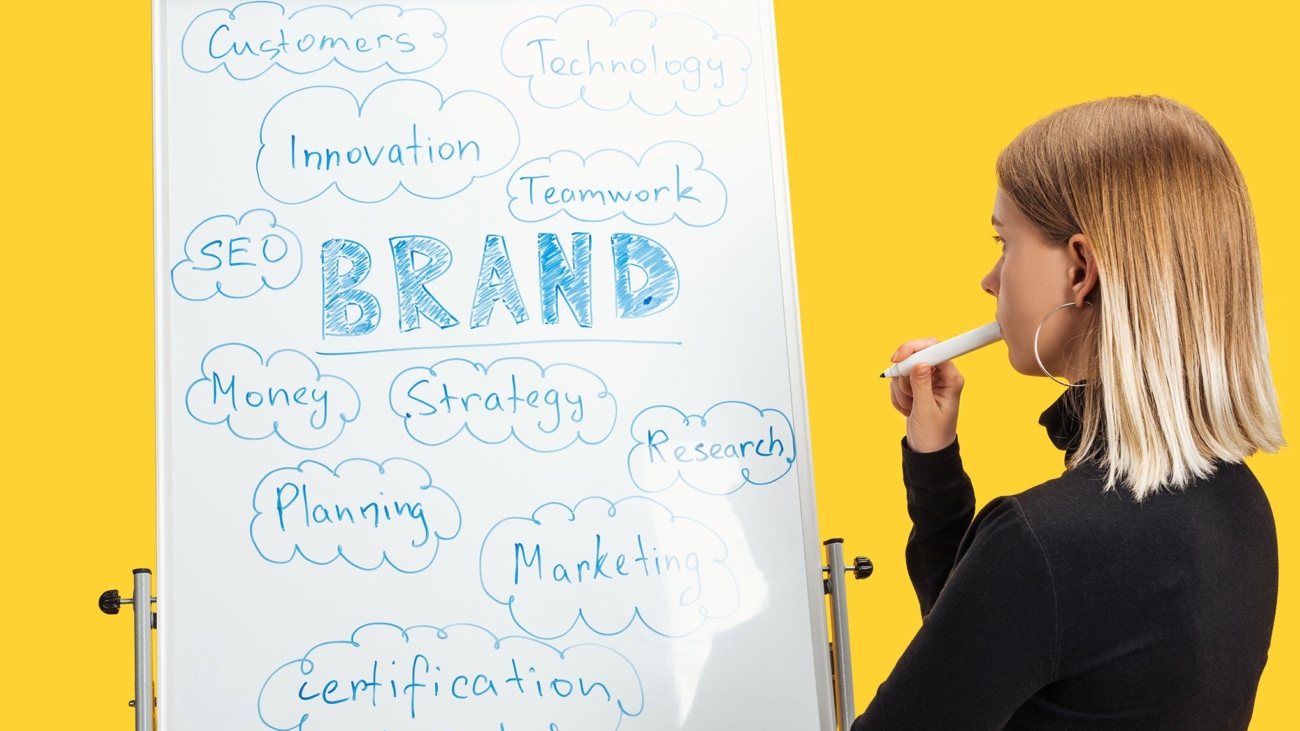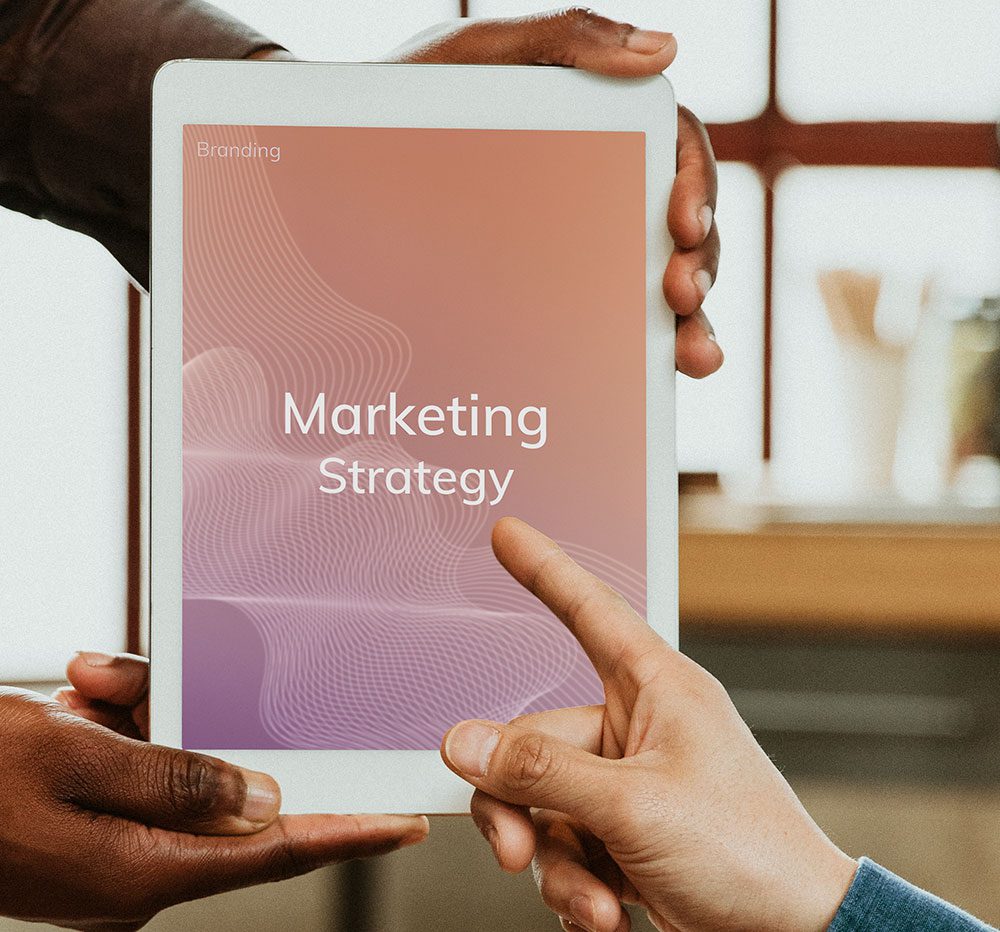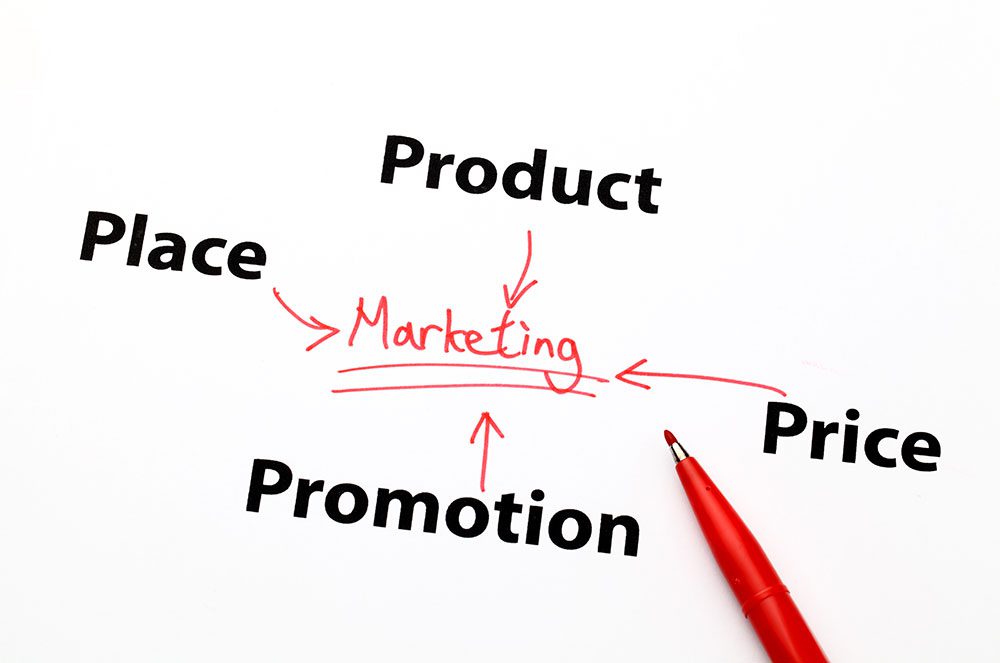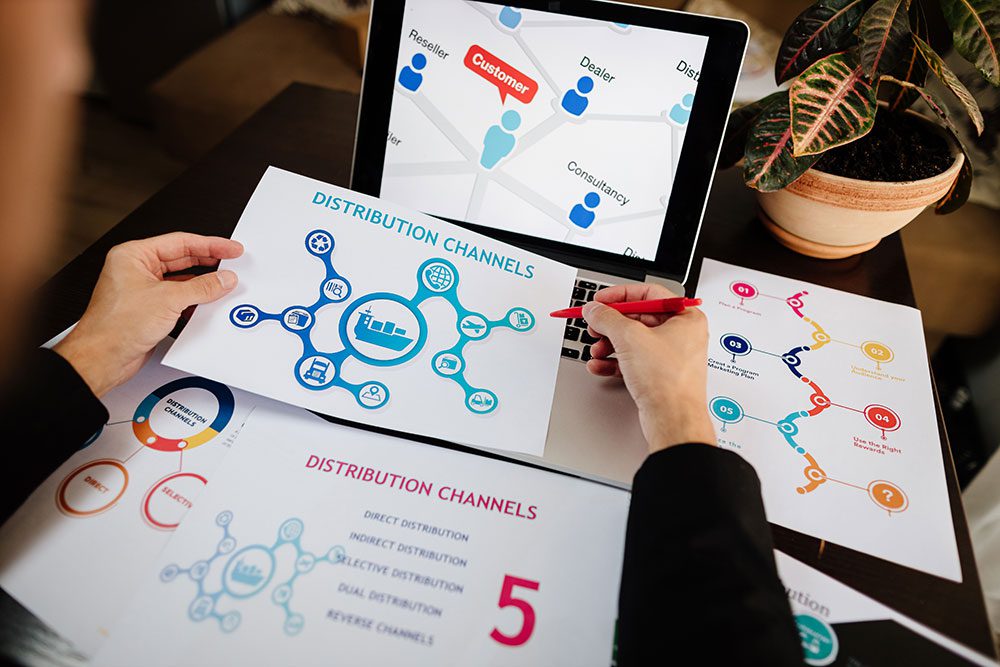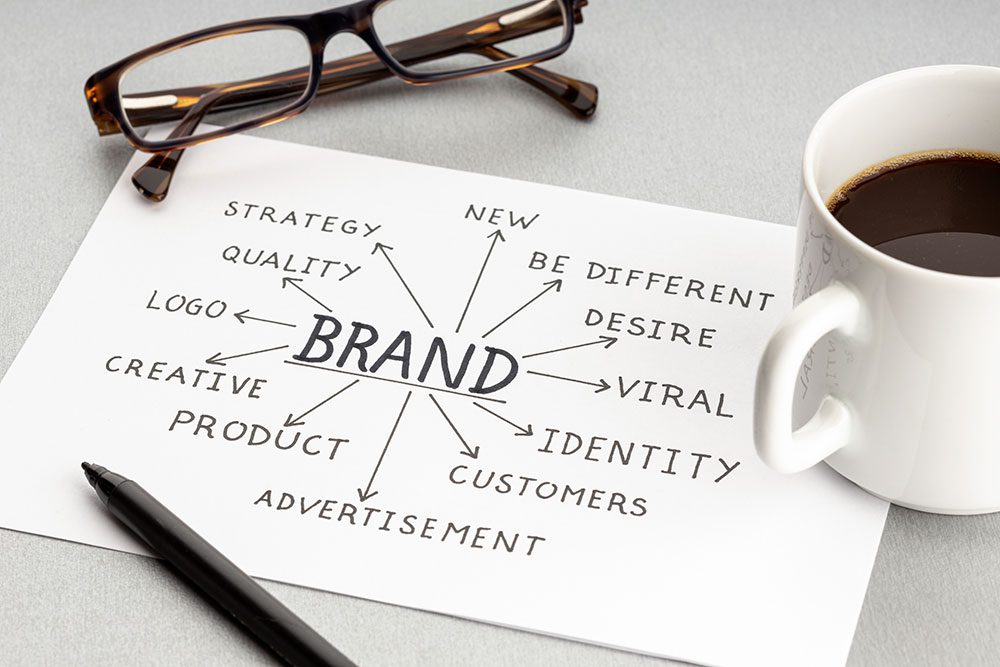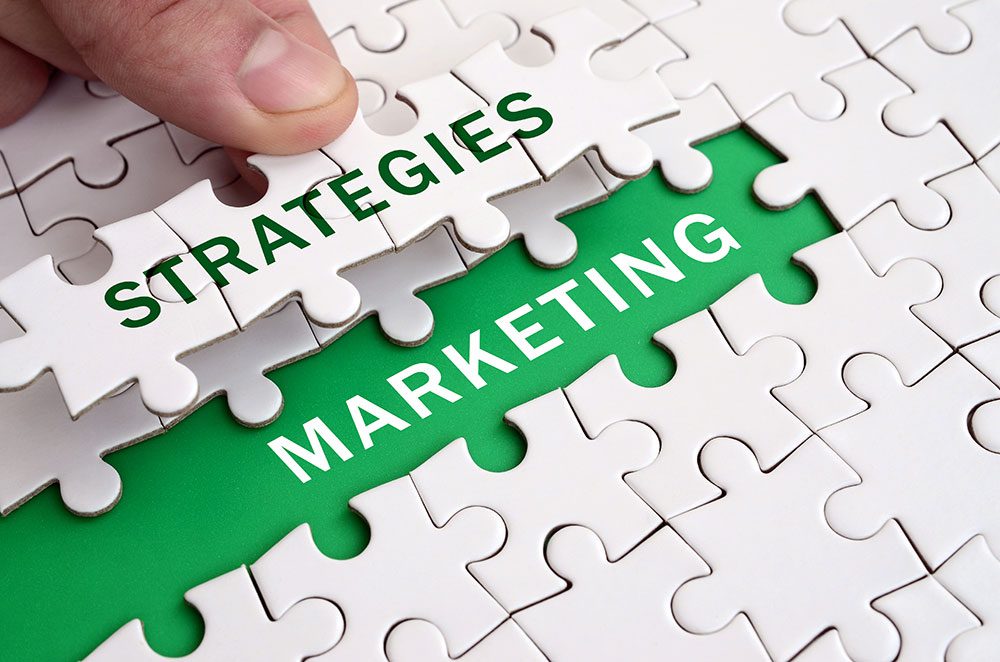3- Behavioral Targeting Techniques
The methods that make behavioral targeting a reality change along with it. By meeting users where they are—emotionally, contextually, and practically—each technique acts as a distinct strategy to improve user engagement. These techniques make use of behavioral data as a key factor in guiding decision-making and content delivery, rather than just as background knowledge. Behavioral targeting strategies allow marketers to communicate with users as individuals rather than just as segments, whether the objective is to make up for lost sales, offer location-specific deals, or make hyper-personalized recommendations.
This section will examine six key behavioral targeting strategies that are now fundamental to digital marketing: cross-device targeting, geo-targeting, contextual targeting, dynamic content personalization, predictive analytics, and retargeting and remarketing. Although they all work on somewhat different tenets, they are all driven by the same goal: to give the user a more timely and relevant experience in order to boost engagement, conversions, and loyalty.

Retargeting and Remarking – Engaging Users Who Interacted With Your Brand
Among the most well-known and frequently applied behavioral targeting strategies are etargeting and remarketing. Despite their frequent interchangeability, each is executed slightly differently. The practice of showing users paid advertisements—such as display ads, social media ads, or programmatic banners—after they have left a brand’s website without converting is commonly referred to as retargeting. Conversely, remarketing frequently entails email-based campaigns designed to re-engage consumers who have already interacted with a brand but did not finish a desired action, like making a purchase or signing up.
The fundamental tenet of both tactics is straightforward but effective: users who have previously shown interest in a brand have a much higher conversion rate than cold leads. These people might have downloaded a resource, added items to a shopping cart, subscribed to a newsletter, or perused a product page, but for whatever reason, they never followed through. Brands have a second (or third, or fourth) chance to convert customers through retargeting and remarketing tactics.
Relevance and timing are what make the difference. A retargeted ad that shows up on Facebook an hour after a user leaves a travel website to look at weekend flights to Paris, offering a temporary discount on flights to Paris, can pique their interest again. Likewise, a customized subject line for an abandoned cart email, such as “Are you still considering those shoes?” appeals to the user’s recent intent and persuades them to return and finish the transaction.
Retargeting and remarketing work well for maintaining brand awareness in addition to boosting conversions. In today’s digitally distracted world, consumers frequently need to engage with a brand several times before making a commitment. These strategies guarantee that those exchanges are intelligent, reliable, and based on past performance.

Predictive Analytics- Using Historical Data to Predict Future Behavior
One of the most forward-thinking tools in the behavioral targeting toolbox is predictive analytics. Predictive analytics aims to address a more profound query than just what a user has done: What is this user likely to do next? Predictive analytics finds patterns in behavior and uses them to predict future actions, interests, and preferences by utilizing sophisticated machine learning algorithms and large datasets.
In order to create a user profile that can change over time, this method uses a range of data sources, including browsing history, frequency of purchases, time spent on the site, bounce rates, engagement metrics, and even social sentiment. After that, these profiles are examined collectively to find recurring trends among comparable users. For instance, the system may flag future users exhibiting the same behavior as potential buyers and launch a targeted campaign with earbuds if a significant portion of users who viewed particular tech accessory types also purchased wireless earbuds within two weeks.

Businesses can use predictive analytics to optimize timing and resource allocation in addition to personalizing offers. Retailers are able to anticipate which customers are most likely to leave and engage them with exclusive deals in advance. Streaming services can enhance recommendation engines by predicting the genres a user might like based on their viewing history. Based on transaction patterns, financial services can determine which customers are most likely to look for new investment products.
Perhaps the most transformative aspect of predictive analytics is its ability to operate in real-time. As user behavior changes, so do the predictions, allowing brands to stay agile and relevant. In the context of behavioral targeting, predictive analytics turns data into foresight, helping businesses shift from reactive to proactive marketing.
Dynamic Content Personalization- Tailoring Content Based on User Behavior
Behavioral targeting becomes an art form when it comes to dynamic content personalization. This method entails instantly changing ads, emails, web content, and app interfaces according to a user’s previous actions. The goal is to make each interaction feel unique, as if the digital experience is being created just for that person.
Personalization can take many different forms. For example, a fashion retailer’s homepage may display product recommendations to a repeat visitor based on their past browsing or purchases. Winter clothing may be emphasized for a first-time visitor from a cold climate. Adding a user’s name, mentioning prior purchases, or providing pertinent content based on previous interactions are examples of dynamic content personalization in email marketing.

The ability of this technique to remove unnecessary noise is what makes it so successful. Users are more likely to interact, convert, and stick around when they believe they are seeing exactly what they need or want without having to look for it. Additionally, personalization makes the buyer’s journey easier for users to navigate and lessens decision fatigue.
Customer data platforms (CDPs), behavioral analytics software, and artificial intelligence (AI) are frequently the underlying engines of dynamic personalization. Real-time micro-interactions, like product clicks, dwell time, or scroll depth, are tracked by these technologies, which then modify the content appropriately. The end effect is a smooth, flexible user experience that boosts customer satisfaction and boosts the company’s return on investment.
Geo-targeting- Leveraging Location Data for Targeting
By adding physical location information to the mix, geo-targeting goes beyond behavioral targeting. This tactic entails presenting offers, advertisements, or content according to a user’s location, either geographically or in relation to a particular location, such as a store or event. GPS, IP addresses, Wi-Fi networks, or mobile app check-ins can all provide the location information.
Geo-targeting can be applied at a hyper-local level, where users are targeted based on streets or neighborhoods, or at a broad level, like customizing ads based on a user’s country, region, or city. For instance, a coffee chain might use geo-targeting to send out morning push notifications on mobile devices to users who are within a mile of a particular location in order to advertise a special offer.
This method works especially well for establishments like restaurants, shops, gyms, and local services that have physical storefronts. Additionally, it can be very important during live events or travel campaigns. Users who recently checked into an airport with hotel or vacation packages could be the target of a travel brand. Similar to this, weather-sensitive campaigns may modify their ad content according to the current climate, providing sunscreen during heat waves or raincoats during stormy weather.
By combining digital interaction with real-world context, geo-targeting enables brands to make marketing seem more immediate, local, and pertinent. It does this by bridging the gap between offline behavior and online engagement.

Contextual Targeting- Aligning Ads with the Content Being Consumed
A behavioral targeting strategy based on alignment and relevance is called contextual targeting. It highlights the content environment in which the ad is displayed rather than just the user’s past behavior. The basic idea is straightforward: display advertisements that are pertinent to the user’s current context.
This method matches ads based on an analysis of the keywords, topics, sentiment, and metadata of the page. For instance, a contextually targeted advertisement may highlight hydration packs or running shoes to a user reading a blog post about marathon training. Advertisements for credit cards or budgeting apps may show up if the content is a news article about personal finance.
Contextual targeting, in contrast to behavioral targeting that depends only on cookies or tracking pixels, can function without user data. Because of this, it is a privacy-friendly choice, particularly given the rising concerns about data collection and regulation. Because advertisers can decide not to place their ads next to content that is controversial or irrelevant, it also improves brand safety.
Contextual targeting’s primary benefit is its capacity to instantly ascertain user intent. An aligned advertisement feels more like a logical continuation of a user’s experience than a disturbance when they are already fully engaged with a pertinent subject. Contextual targeting therefore frequently results in improved ad performance and increased engagement, especially on content-heavy platforms like blogs, news sites, and video channels.

Cross-Device Targeting- Following User Behavior Across Multiple Devices
One of the main issues facing digital marketing today is fragmented user journeys, which cross-device targeting attempts to solve. In a time when people constantly switch between phones, tablets, desktop computers, and even smart TVs, it’s critical to comprehend and keep a consistent picture of their behavior. Marketers can follow and connect the same user across all of their devices with cross-device targeting, resulting in a smooth and uniform user experience.
This method is based on identifying users using probabilistic models (which match users based on device signals and behavioral patterns) or deterministic methods (like login credentials or user IDs). Marketers can guarantee messaging consistency once a user is recognized across devices. For instance, a user may later see a retargeted advertisement after perusing a product on their phone while commuting.
Improved user experience, precise attribution, and enhanced personalization are all made possible by cross-device targeting. Additionally, it lessens redundancies by ensuring that users see content that corresponds to their stage in the journey rather than the same advertisement on multiple devices. This is particularly important for apps, streaming services, and e-commerce in order to increase conversions and maintain user engagement.
In the end, cross-device targeting captures the nonlinear, multi-screen, and constantly connected nature of contemporary consumer behavior. Brands that are adept at this strategy have a big advantage when it comes to creating campaigns that are cohesive and successful and move with the user rather than behind them.

4- Behavioral Targeting Channels
Behavioral targeting, while deeply data-driven, ultimately comes to life through the channels brands use to reach their audiences. The channel specifies how behavioral data is analyzed, molded, and converted into a customized message or experience; it is more than just a means of delivery. Different levels of immediacy, personalization, and engagement are presented by each channel, along with unique opportunities and challenges.
As user behavior has become more complex, behavioral targeting channels have expanded, ranging from the personalized experience of a website visit to the sophisticated retargeting opportunities on social media. Developing a successful omnichannel marketing strategy requires knowing when and how to use behavioral insights. This section examines the five main channels—websites and apps, social media platforms, email campaigns, search engine ads, and e-commerce platforms—where behavioral targeting is actively influencing contemporary marketing.
Websites and Apps- Personalizing On-Site User Experiences
Nowadays, the majority of businesses use websites and apps as their main online stores. They are frequently the initial point of contact for clients, and they present what may be the best chance to use real-time behavioral targeting. The flexibility of websites and apps is what makes them so appealing; calls to action, offers, layout, and content can all be dynamically changed according to the user’s identity and past interactions.
A website or mobile application’s user experience becomes intuitive and personalized when behavioral data is used effectively. An e-learning platform might, for example, suggest courses that are comparable to those a user has already looked at or finished. Exercise recommendations from a fitness app could be customized according to user preferences or workouts missed. The homepage itself can be changed to display user-specific banners, product carousels, or seasonal sales based on user activity.
Website dwell time, scroll depth, pages viewed, navigation paths, and even cursor movement are all tracked by advanced behavioral tracking. With this knowledge, companies can lessen customer journey friction in addition to providing pertinent content. When a user returns for a second time, they might be met with a quicker and easier checkout process that avoids the steps they previously skipped.
Furthermore, customization goes beyond aesthetic components. Behavioral data can be used to optimize in-app messaging, push notifications, and load speeds, making the user experience responsive and focused on the user. Because websites and apps give brands complete control over the user experience, they are among the most effective platforms for behavioral targeting.

Social Media Platforms- Using Behavioral Insights for Ad Targeting
Digital interaction has changed as a result of social media, and behavioral targeting on these sites is highly advanced. Social media sites such as Facebook, Instagram, TikTok, LinkedIn, and Twitter gather a lot of information about user behavior, including likes, shares, follows, clicks, comments, video views, hashtags, and more. With the help of this wealth of data, marketers can target users based on subtle behavioral cues rather than just basic demographics.
Social media behavioral targeting has the advantage of smoothly fitting in with contemporary users’ consumption patterns. Individuals interact with content for hours every day, frequently without realizing how much behavioral data they are giving algorithms. Lookalike audiences, interest-based targeting, retargeting from website visits or app usage, and even engagement-level targeting (such as focusing on users who watched 75% of a video ad) are just a few of the potent targeting options that social media platforms use to provide advertisers.
Social media platforms are especially good for remarketing. After visiting a fashion retailer’s website but not buying anything, a user may later see a carousel advertisement on Instagram that showcases the same products they looked at. A promoted webinar on executive coaching might be displayed to a LinkedIn user who reads a blog post about leadership techniques. By doing this, users are re-engaged in the places where they naturally spend their time, establishing continuity across platforms.
Additionally, social media platforms enable extremely inventive formats, such as polls, stories, reels, dynamic advertisements, and influencer collaborations. Based on behavioral data, all of these can be customized to boost conversions, click-through rates, and engagement. Social media is a perfect platform for behavioral targeting because it encourages listening and responding in addition to broadcasting.

Email Campaigns- Crafting Personalized Email Content Based on Behavior
When fueled by behavioral data, email—one of the earliest digital marketing tools—continues to be a formidable force. Beyond simply including a user’s name in the subject line, behavioral email marketing uses information like browsing habits, past purchases, frequency of engagement, and interaction time to send messages that are timely and highly relevant.
The core of this channel is the idea of behaviorally triggered emails. A reminder email containing the abandoned items and possibly a discount is sent to a user who leaves their cart empty, for instance. A reactivation campaign with tailored suggestions or unique content may be sent to a subscriber who hasn’t responded to recent emails. When a new product in their favorite line is released, a person who regularly purchases skincare products might receive an email.
Automation is also improved by behavioral targeting in email campaigns. It is possible to create workflows where each user takes a different route that is determined by how they interact with the content. The subsequent email may only discuss beach vacations, which would encourage a user to convert, if they open an email about summer travel destinations but only click on beach locations.
Another behavioral insight that email marketers can use is timing. Send schedules can be adjusted to ensure that messages arrive at the most receptive times by using data on when users are most likely to open and interact with emails. In a similar vein, previous open and click behavior can be used to dynamically modify the subject line, preview text, and even the language of the call to action.
In the end, behaviorally targeted email campaigns establish a 1:1 communication channel that is efficient, relevant, and personalized. They increase long-term value and foster trust by giving each user the impression that the message was personally written just for them.

Search Engine Ads- Leveraging Search Intent for Keyword Targeting
A wealth of intent-rich behavioral data is available through search engines. Every search query entered into Google, Bing, or Yahoo provides a clear window into the user’s current thoughts and goals. Search engine marketing (SEM) can be a potent tool for matching a brand’s message with current user intent when it is guided by behavioral targeting principles.
Keyword behavior is frequently the first step in behavioral targeting in this channel. If consumers regularly look for “budget smartphones under $300,” advertisers can focus their campaigns on that demographic, creating copy that speaks to price sensitivity and providing promotions that match the search term. Targeting users according to the order of their queries—for example, “best beginner DSLR” followed by “Canon vs Nikon comparison” and then “Canon EOS Rebel T7 review”—is one of the more advanced strategies. The user’s proximity to conversion can be ascertained with the aid of this behavioral trail.
Retargeting via search history is also supported by search platforms. When a user searches for a rival product after visiting a particular product page, they may later see a sponsored advertisement. In a similar vein, advertisers can target past site visitors or converts with tailored search ads that correspond to their most recent interaction by using custom audience lists.
This channel’s contextual and behavioral alignment is what makes it so effective. Search is an active manifestation of need or interest as opposed to passive browsing. The ad placement becomes incredibly relevant when behavioral targeting is added on top of this, using past click-through behavior, device usage patterns, or geographic behavior.
To put it briefly, search engine ads are ideal for behavioral targeting strategies that reach users when they need them because they are precise and urgent.

E-commerce Platforms- Recommendations Based on User Browsing and Purchase History
Given the volume of transactional and browsing data available, e-commerce platforms may be the best place to implement behavioral targeting. The user experience can be tailored at every stage thanks to the comprehensive behavioral profile that is created by each click, product view, purchase, return, and review.
The recommendation engine is among the most well-known and successful methods in this field. In order to recommend pertinent products, platforms such as Amazon, Etsy, and Shopify stores use algorithms that examine browsing and purchase patterns. For example, the website might advertise eco-friendly pet toys or related products like feeding bowls if a customer regularly purchases organic pet food. These recommendations aren’t arbitrary; rather, they’re based on behavioral cues that reveal preferences for price, frequency of purchases, lifestyle, and taste.
On e-commerce sites, behavioral targeting also makes dynamic content blocks possible, such as highlighting complementary products during the checkout process, surfacing recently viewed items to returning users, or displaying bestsellers to first-time visitors. These personalized touches facilitate decision-making and promote repeat business.
Additionally, lifecycle marketing and retention are supported by behavioral targeting. An automated email reminder or an app push notification with a reorder option can be sent right before a user runs out of skincare products, if they usually buy them every 30 days. With special offers or loyalty rewards based on their past purchases, a re-engagement campaign can be started if a valuable customer hasn’t made any purchases in a long time.
Rich behavioral feedback loops are provided by e-commerce platforms, including what users ignore, what they consider, what they compare, and what they decide to buy (or not). As a result, a closed ecosystem is created in which behavioral targeting can be improved and optimized over time, increasing average order values, conversion rates, and customer retention.

5- Benefits of Behavioral Targeting
A fundamental tactic that produces tangible, quantifiable results throughout the customer lifecycle, behavioral targeting is more than just a marketing fad. Marketers can send more timely, relevant, and customized messages that connect with consumers in ways that generic campaigns just cannot by comprehending and responding to individual behaviors. The benefits of behavioral targeting are numerous and include budget efficiency, performance metrics, user experience, and enduring client relationships.
Brands that use behavioral targeting are in a position to not only stand out but also create enduring relationships with their audience as consumer expectations change and digital competition heats up. Let’s take a closer look at the four main advantages of behavioral targeting.
Improved Customer Experience- How Personalization Drives Satisfaction
The promise of a more seamless and customized consumer experience is at the core of behavioral targeting. Customers are constantly exposed to messages, offers, and content in the current digital era. Generic outreach is frequently overlooked or forgotten. However, users’ perceptions of the brand are significantly enhanced when they come across content that speaks to their needs, preferences, and past behavior.
Businesses can customize the digital journey according to each user’s interactions by using behavioral targeting. For instance, depending on whether a user has previously perused men’s or women’s clothing, a fashion retailer may present distinct clothing collections to each visitor rather than the same homepage. For a user who just finished a Python programming module, an online learning platform might recommend new data science courses. The experience is made more seamless and pleasurable by these micro-adjustments, which are driven by behavioral insights and assist users in finding what they’re looking for more quickly.
Additionally, user annoyance is often decreased by personalized experiences. Brands eliminate obstacles that frequently result in drop-offs or abandonment by remembering preferences, such as saved payment information, preferred language, or frequently visited pages. Instead of just marketing to users, behavioral targeting makes sure they feel heard. This feeling of significance boosts contentment, fosters trust, and promotes recurring participation.
To put it briefly, behavioral targeting changes the user experience from a one-size-fits-all interface to a contextual journey that is customized for each user, increasing engagement, brand affinity, and overall satisfaction.

Higher Conversion Rates- Aligning Offers with Customer Intent
The effect that behavioral targeting has on conversion rates is among its most obvious and quantifiable advantages. Customers are much more likely to convert when marketing messages, product recommendations, or promotional offers reflect what they truly need or want based on their behavior.
Consider how displaying a generic running shoe advertisement differs from displaying a particular model that the user has recently viewed, along with an extra incentive such as a time-limited discount. The second strategy creates urgency, feels purposeful, and speaks directly to user interest. When it comes to bridging the gap between user intent and brand messaging in a way that motivates action, behavioral targeting excels.
Depending on the business goal, conversion can take many different forms, such as a form submission, a purchase, a download of content, or even just a page visit. By guaranteeing that the appropriate message is sent at the appropriate time, behavioral targeting improves each of these conversion objectives. For instance, an online retailer may discover that a client regularly purchases infant supplies. The website can provide a carefully chosen “new baby essentials” bundle when that customer returns, boosting the likelihood of an upsell or cross-sell.
Additionally, behavioral targeting enhances conversion timing. Marketers can optimize campaign delivery for those crucial windows by identifying patterns, such as a customer’s preferred device or shopping habits. When it comes to pushing users down the funnel, a retargeted ad displayed after cart abandonment or a reminder email sent during a user’s peak engagement hour can make all the difference.
In the end, behavioral targeting improves conversion metrics across channels by recognizing and reacting to the real-world behavior of passive browsers, turning them into active buyers.

Efficient Use of Marketing Budgets-Reducing Wastage by Targeting the Right Audience
The potential of behavioral targeting to increase the effectiveness of marketing expenditures is among its most useful benefits. Conventional marketing strategies frequently use broad assumptions or demographic data that may or may not lead to engagement. However, by concentrating resources on users who have demonstrated definite indications of interest or intent, behavioral targeting enables marketers to be more strategic and selective.
Marketers can give priority to high-value segments that are more likely to convert by targeting ads or campaigns to individuals based on their previous behavior, such as visiting a pricing page, leaving a cart empty, or regularly interacting with particular content. Because money isn’t wasted on users who are unlikely to respond, this results in a higher return on investment.
For instance, a business can spend money retargeting people who have already visited its website or engaged with its social media channels rather than purchasing impressions from a broad audience. These people have already shown some interest, and it is very affordable to re-engage them with behaviorally informed campaigns. In a similar vein, brands can use predictive analytics to identify the segments that are most likely to churn and allocate funds for loyalty incentives for those who are at risk.
Moreover, budget optimization across channels is made possible by behavioral targeting. Marketers can redirect spending toward combinations that are most effective by examining which platforms, times, and messages generate the most engagement among particular behavioral cohorts. This fine-tuning—impossible with generic targeting—results in lower customer acquisition costs and higher marketing efficiency.
In an environment where every marketing dollar must be justified, behavioral targeting provides a data-driven strategy to minimize waste and maximize impact, making campaigns not only more effective but also more economically sustainable.

Customer Retention and Loyalty- Building Deeper Connections with Existing Customers
Behavioral targeting is essential to customer retention and loyalty building, which is even more valuable in the long run in many industries, even though a large portion of marketing is focused on acquisition. It is frequently less expensive and more profitable to keep an existing customer than to find a new one. By continuously analyzing and reacting to consumer behavior, behavioral targeting assists brands in preserving significant, long-lasting relationships.
For example, brands can initiate prompt follow-ups that boost customer satisfaction and loyalty by examining post-purchase behavior, such as product usage, interaction with help content, or review submissions. Depending on how a customer uses a new software product, a tech company may send a series of informative onboarding emails. As a customer approaches the end of a product they have already purchased, a skincare brand may provide a subscription option.
Behavioral targeting makes loyalty programs more intelligent and pertinent. Brands can customize incentives according to factors like frequency of purchases, preferred product categories, or time since the last purchase rather than giving out the same rewards to everyone. This enhances emotional ties and promotes repeat business by personalizing the loyalty experience.
The ability to identify and stop churn is another potent feature of behavioral targeting for retention. Brands can take proactive measures with win-back campaigns, exclusive deals, or surveys to identify and resolve issues when behavioral data shows disengagement, such as fewer site visits, lower open rates, or unfinished orders.
Above all, behavioral targeting keeps brands contextually relevant over time. Marketing messaging changes in tandem with consumer preferences and behaviors to keep the brand feeling relevant to the needs of the consumer. This enduring resonance contributes to the development of satisfaction, trust, and eventually enduring loyalty.
Continue Reading
- Behavioral Targeting- How to Customize Your Marketing Efforts / Part 1
- Behavioral Targeting- How to Customize Your Marketing Efforts / Part 2
- Behavioral Targeting- How to Customize Your Marketing Efforts / Part 3
- Behavioral Targeting- How to Customize Your Marketing Efforts / Part 4
Written By: Anshul Jharia






















